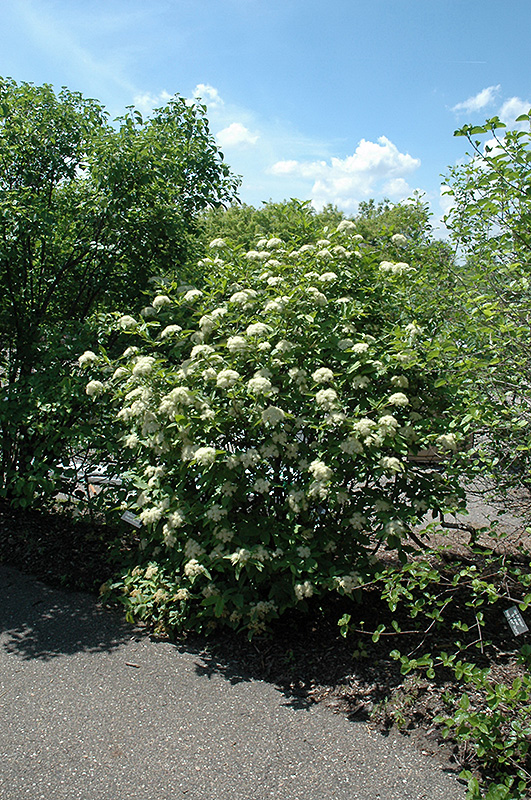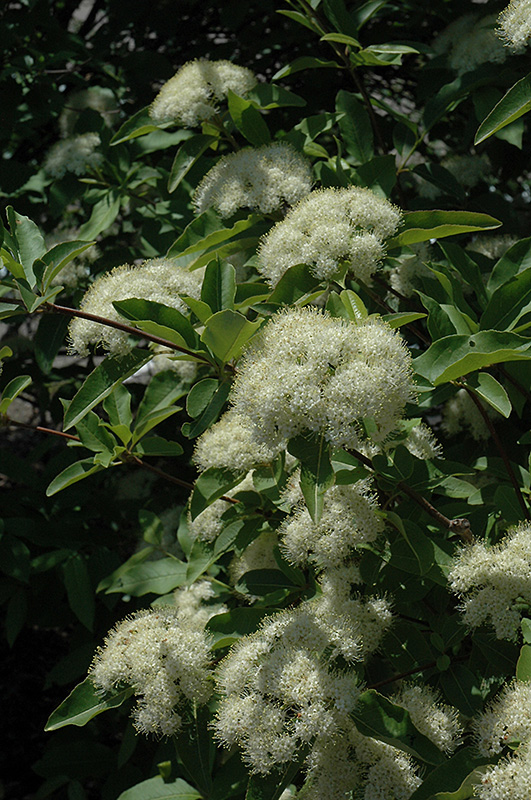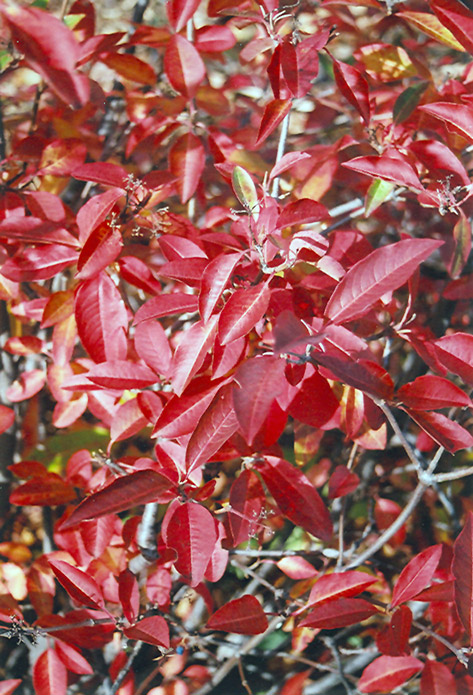PLANTFINDER
search. discover. plant.
Height: 6 feet
Spread: 6 feet
Sunlight:
![]()
![]()
Hardiness Zone: 2
Description:
An underutilized native woodland shrub with many attributes; clusters of creamy white flowers in spring, showy fruits which start reddish pink, becoming dark blue in fall, attractive to birds, and good fall color; great for the shrub border or screening
Ornamental Features
Witherod Viburnum features showy creamy white flat-top flowers at the ends of the branches in late spring. The royal blue fruits are held in abundance in spectacular clusters from early fall to late winter. It has dark green deciduous foliage which emerges purple in spring. The pointy leaves turn an outstanding brick red in the fall.
Landscape Attributes
Witherod Viburnum is a dense multi-stemmed deciduous shrub with a more or less rounded form. Its average texture blends into the landscape, but can be balanced by one or two finer or coarser trees or shrubs for an effective composition.
This is a relatively low maintenance shrub, and should only be pruned after flowering to avoid removing any of the current season's flowers. It is a good choice for attracting birds to your yard, but is not particularly attractive to deer who tend to leave it alone in favor of tastier treats. It has no significant negative characteristics.
Witherod Viburnum is recommended for the following landscape applications;
- Accent
- Mass Planting
- Hedges/Screening
- General Garden Use
Planting & Growing
Witherod Viburnum will grow to be about 6 feet tall at maturity, with a spread of 6 feet. It tends to be a little leggy, with a typical clearance of 1 foot from the ground, and is suitable for planting under power lines. It grows at a medium rate, and under ideal conditions can be expected to live for 40 years or more.
This shrub does best in full sun to partial shade. It prefers to grow in average to moist conditions, and shouldn't be allowed to dry out. It is not particular as to soil type or pH. It is somewhat tolerant of urban pollution. This species is native to parts of North America.
A NetPS Plant Finder tool



